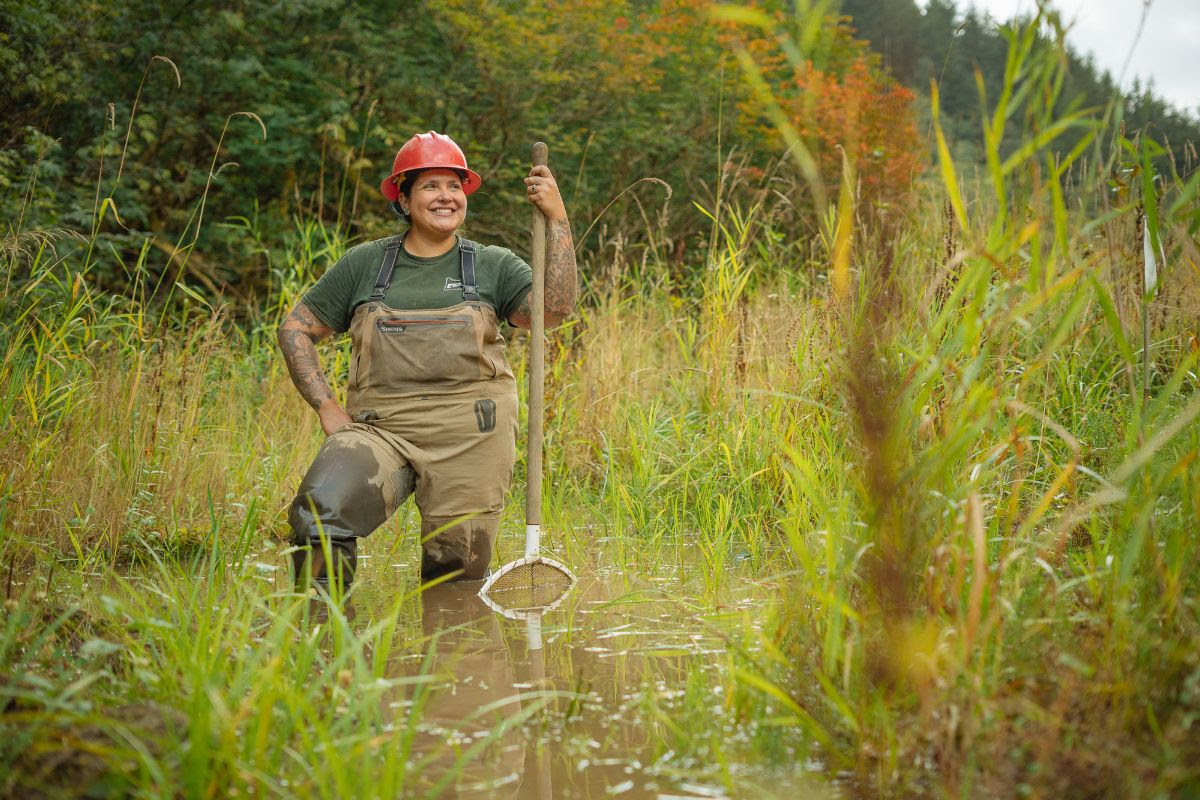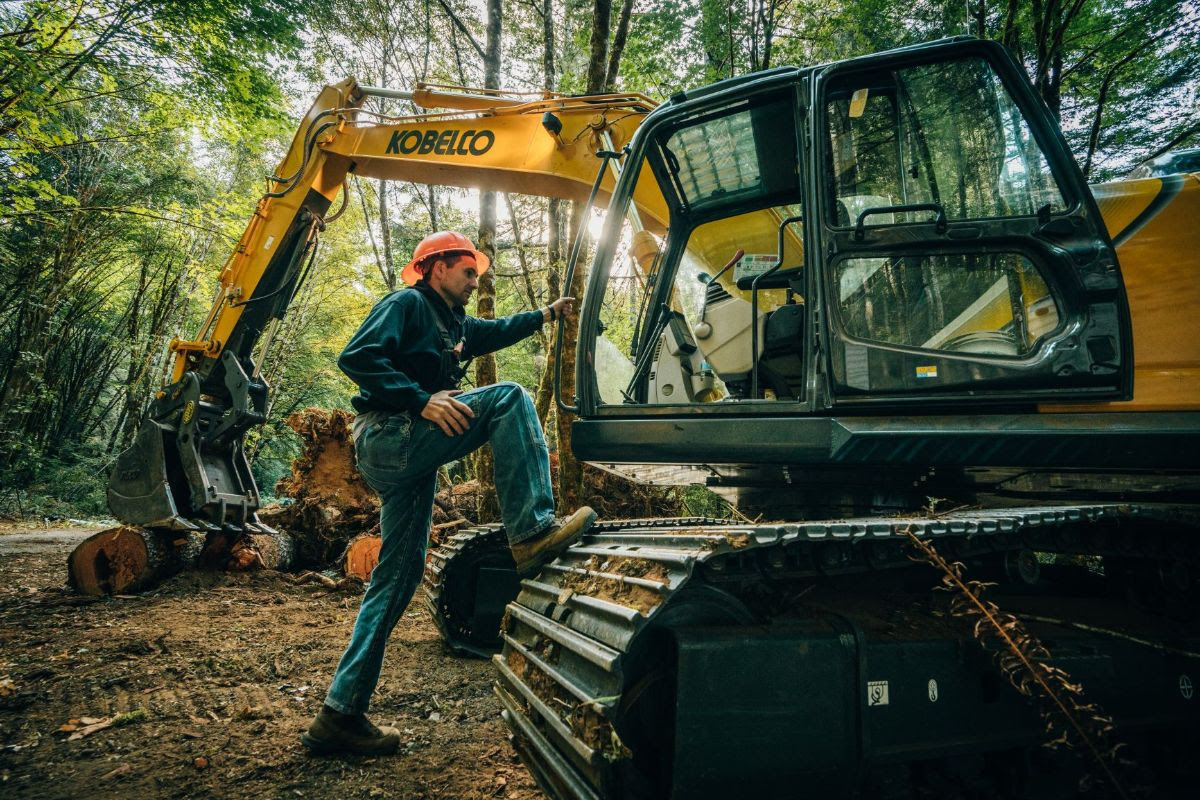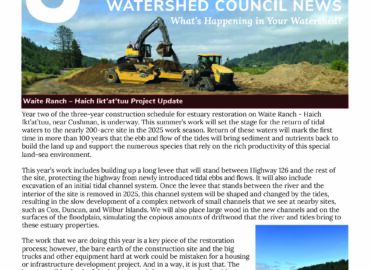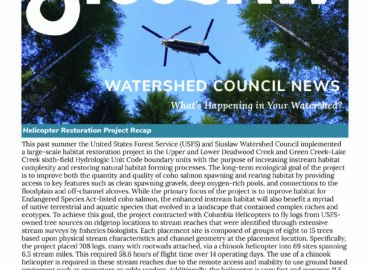The Effects of Beavers in the Face of Climate Change
Wednesday May 29, 2019
Join us to hear from Kami Ellingson, with the Siuslaw National Forest about how Beavers can help us make a more resilient landscape in the face of climate change in our watershed.
Wildfires, droughts and floods are increasing in frequency and intensity across the United States. Along the coasts, increasing tidal pressure is eroding coast lines and flooding low coastal estuaries and wetlands more frequently, especially when coupled with a peak rain or snowmelt driven flood event. Periods of drought are extending due to the timing and distribution of rainfall. Snow accumulations are declining and the timing of snow accumulation and snowmelt is shifting temporally. Herbicide and sediment run-off from intensively managed agriculture and forest land is polluting once pristine surface drinking water and aquifers. Increasing frequency and intensity of wildfires is due to a complicated set of conditions. Water scarcity/drought, past forest management and fire suppression are just a few significant components, but much of the more recent research is looking at perhaps an unexpected and underrepresented change across our landscape that may have been an even more significant contributor. Before European settlement of the United States, dominant features on the landscape were large wetland complexes that were created and maintained by millions of beavers (approx. 600 million). Trapping and killing nearly all of the millions of beavers by 1900, altered the hydrology, ground water tables and dramatically reduced the wetland features across the U.S. Current research where beavers are being reintroduced is indicating that wetland complexes created and maintained by beavers create significant fire breaks, stopping fire at the wetland edge and preventing its spread. Ground water tables elevated by beaver wetland complexes, reduce the impacts of drought by holding water during the extended periods without rainfall in the summer. Douglas fir are sensitive to drought and drought stressed trees are dying at alarming rates. Dead and dying overstocked forests of Douglas fir are burning more frequently and at higher intensities. The typical old growth forests that were common along the western United States, had approximately 14 large conifers per acre in a Douglas fir dominated forest type. These old growth forests would have consisted of mixed species and age classes of a variety of tree types and sizes. Following intensive, early forest management where clear cuts were the primary method of harvest, one species, Douglas fir, was replanted at a very high planting density (300-400 trees per acre). Next came fire suppression practices, resulting in stands consisting of dense and dog-haired, Douglas fir at tight 8-10ft spacing. Logging can mimic fire created openings in the forests and thinning previous clear cuts that were heavily planted with Douglas fir, can help reduce fuel loading, drought stress and slow or prevent fire spreading. Wetland complexes constructed and maintained by beavers naturally slow and mitigate flooding, filter water, cool water temperatures and provide unmatched habitat for fish, insects, waterfowl and wildlife. Ditching and draining our streams, wetlands, meadows, valleys and estuaries results in removing water quickly, lowering the water table and effectively unraveling dynamic natural systems. In the 1800’s beaver pelts were the currency that engendered the United States. However, removing beavers caused a chain of events that we have not yet fully come to understand or quantify. With climatic conditions changing, this unraveling of our natural systems has resulted in real and measurable impacts to our water, habitat and ecosystems and altered the resiliency of our natural systems to adapt and absorb these changes.
Join us on May 29th at the Big Bear Camp and Retreat Center at 89480 Nelson Mountain Road, Walton, OR97490.
If you would like a tour of this beautiful facility and it's surroundings, be sure to come early at 4:30 and take a small and easy hike!
Program News
Spring-Summer 2024 Newsletter
To view the full PDF version of our newsletter, click the link: Spring-Summer 2024 Newsletter
Winter 2024 Newsletter
To view the full PDF version of our newsletter, click the link below: Winter 2024 Newsletter






